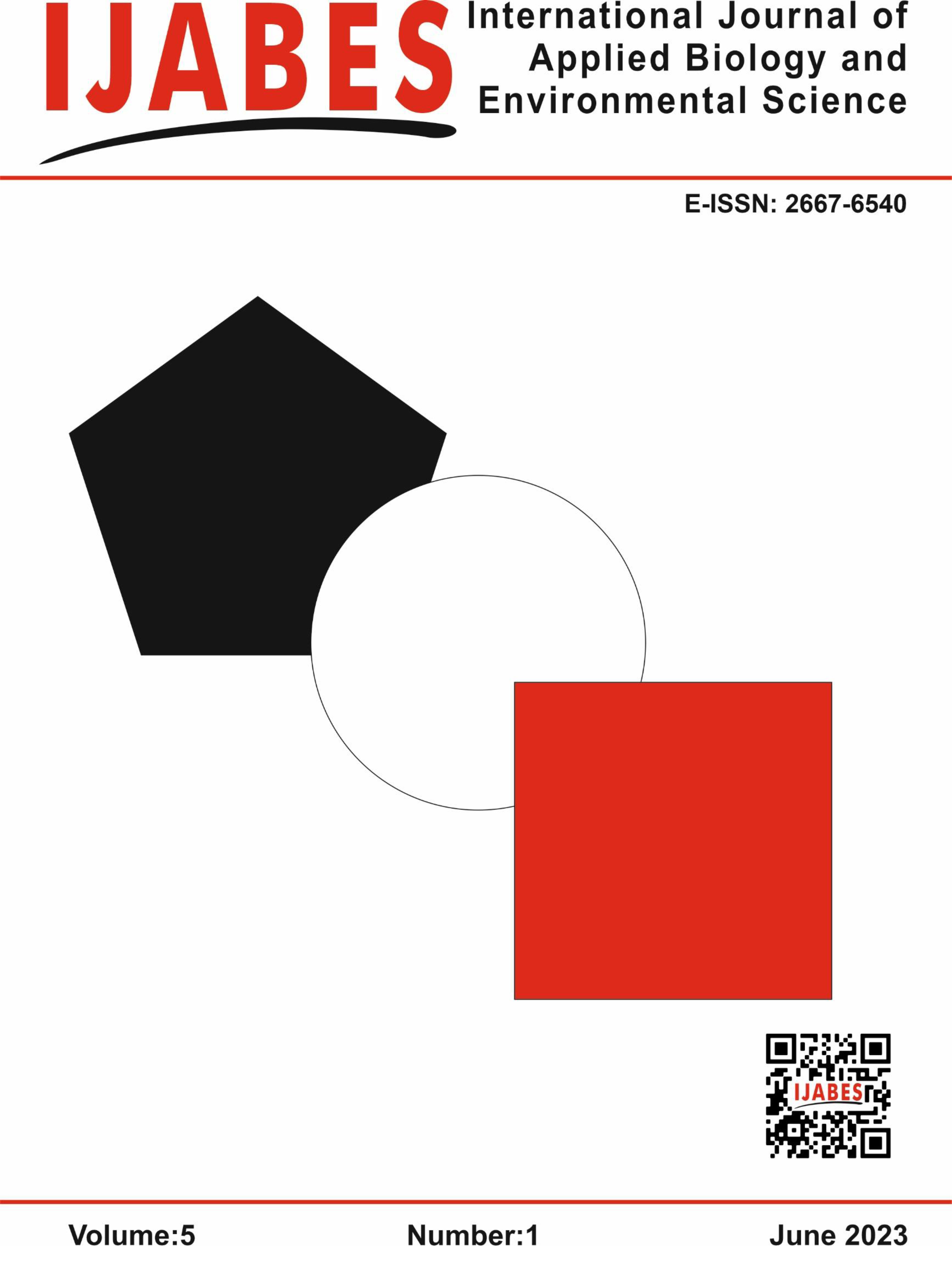








Yayımcı adresi: Hadımköy TOKİ Mevlana Cd. B1/2 D:2
Hadımköy / Arnavutköy / İstanbul

This work Licensed under the Creative Commons Attribution 4.0 International License.
The Effect of Boric Acid on Tissue and Enzyme Activity in Eisenia Fetida
Mustafa Uyanoğlu, Özge Turgak KaydıhanDepartment of Biology, Faculty of Science and Letters, Eskisehir Osmangazi University, Eskisehir, TR-26040 Turkey.Our country is the leader in terms of boron richness in the world and boron compounds are used in numerous industrial and agricultural purposes. Although it has such a vast area of use, studies on its effects in living things are limited. The present experimental study was planned composing of 10 groups (each group contained 10 Eisenia fetida earthworms). The study included two control groups; negative control group (Group I), and positive control groups (Groups II, III and IV). Positive controls were administered three different doses of cadmium nitrate tetrahydrate. Groups V, VI and VII were exposed with three different doses of boric acid. At the end of the applications, conducted for 7 days at experimental habitats, intestinal epithelium and chlorogenic tissues histopathology were evaluated by using light microscope. In transmission electron microscope (TEM) examinations, the cells taken form these tissues were assessed regarding to both mitochondrial and smooth endoplasmic reticulum (ER) structural changes with glycogen and lipid droplet accumulations. Activities of catalase (CAT) and glutathione peroxidase (GPx) enzymes were also examined by using native gel electrophoresis technique. The obtained findings revealed that the toxic effects of tested boron compound were higher than that of cadmium when only used in high amount. Boric acid was not toxic as much as cadmium.
Keywords: Boric acid, Earthworms, Histopatology, TEM, Antioxidant enzymeEisenia Fetida' da doku ve enzim aktivitesi üzerine borik asitin etkileri
Mustafa Uyanoğlu, Özge Turgak KaydıhanESOGÜ, Fen Edebiyat Fakültesi, Biyoloji Bölümü, Eskisehir, TR-26040 Türkiye.Ülkemiz bor zenginliği açısından dünyada lider konumdadır ve bor bileşikleri çok sayıda endüstriyel ve tarımsal amaçla kullanılmaktadır. Bu kadar geniş bir kullanım alanına sahip olmasına rağmen canlılar üzerindeki etkileri ile ilgili çalışmalar sınırlıdır. Mevcut deneysel çalışma 10 grup (her grupta 10 adet Eisenia fetida toprak solucanı) içerecek şekilde planlanmıştır. Çalışma iki kontrol grubunu içeriyordu; negatif kontrol grubu (Grup I) ve pozitif kontrol grupları (Grup II, III ve IV). Pozitif kontrollere üç farklı dozda kadmiyum nitrat tetrahidrat uygulandı. Grup V, VI ve VII, üç farklı dozda borik asit ile maruz bırakıldı. Deneysel habitatlarda 7 gün süreyle gerçekleştirilen uygulamaların sonunda ışık mikroskobu kullanılarak bağırsak epiteli ve klorojenik dokunun histopatolojisi değerlendirildi. Transmisyon elektron mikroskobu (TEM) incelemelerinde bu dokulardan alınan hücreler hem mitokondriyal hem de düz endoplazmik retikulum (ER) yapısal değişiklikleri ile glikojen ve lipid damlacıkları birikimleri açısından değerlendirildi. Katalaz (CAT) ve glutatyon peroksidaz (GPx) enzimlerinin aktiviteleri de doğal jel elektroforez tekniği kullanılarak incelendi. Elde edilen bulgular, test edilen bor bileşiğinin sadece yüksek miktarda kullanıldığında toksik etkilerinin kadmiyumdan daha yüksek olduğunu ortaya koymuştur. Borik asit, kadmiyum kadar zehirli değildi.
Anahtar Kelimeler: Borik asit, Toprak solucanı, Histopatoloji, TEM, Antioksidant enzimManuscript Language: English